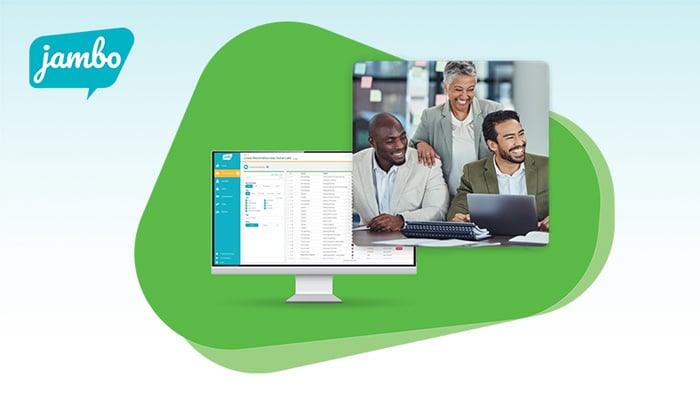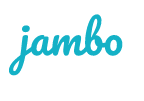
Stakeholder Relationship Management software (SRM) transforms how organizations manage stakeholders and build durable, transparent relationships. It's indispensable for organizations looking to build trust, maintain compliance, and deliver successful projects.
With the right SRM software, organizations can centralize all stakeholder data, streamline engagement workflows, and ensure that every communication and commitment is recorded consistently and can be remembered and addressed.
This guide will introduce the software's essential features and functions, what to look for, and how to choose the best Stakeholder Relationship Management software for your team.
Table of Contents
- What is Stakeholder Relationship Management software?
- Who uses SRM solutions?
- Why is SRM important for organizations?
- Features of SRM software
- Case studies and success stories
- Differences between SRM and CRM software
- SRM software vs. spreadsheets
- SRM software security
- When to adopt SRM software?
- Identifying the best SRM software
- FAQs about SRM software
What is Stakeholder Relationship Management Software?
Stakeholder Relationship Management software is a digital tool designed to centralize, organize, and streamline an organization's stakeholder contact information, communication records, commitments, issues, and reporting in one secure, searchable hub.
SRM platforms support regulatory compliance, help organizations meet consultation obligations, and enable project teams to deliver results fast and confidently.
Some of the primary functions of an SRM software are:
- Centralized stakeholder database: Store all stakeholder contact information, affiliations, and custom attributes in one secure place.
- Engagement tracking: Log emails, meetings, calls, and other communications to maintain a complete history of interactions.
- Commitment management: Record and track commitments to stakeholders, assign and monitor tasks, and set recurring commitments for repeated actions.
- Issue management: Log stakeholder issues or concerns and understand their priority and impact.
- Reporting and analytics: Generate audit-ready, shareable reports for regulatory requirements or leadership and access dashboards to analyze sentiment and identify trends.
- Collaboration and security: Enable multiple team members to securely contribute to stakeholder engagement activities, ensuring data integrity and privacy.
- AI-powered insights and automation: Leverage artificial intelligence to analyze communication patterns, identify emerging issues, predict stakeholder sentiment, automate reminders, and recommend targeted engagement strategies.
Who uses Stakeholder Relationship Management software?
Key sectors leveraging SRM software solutions include government teams, forestry companies, mining companies, transportation and infrastructure teams, renewable energy organizations, oil and gas companies, and healthcare agencies. In these industries, SRM tools help teams manage relations with various stakeholders, such as communities, regulators, environmental groups, investors, policymakers, Indigenous peoples, and more.
Typical teams using SRM solutions include stakeholder engagement and consultation teams, community relations and public affairs departments, Indigenous relations offices, regulatory affairs and compliance teams, ESG and sustainability specialists, project managers, executive leadership, and communication professionals.
Why is Stakeholder Relationship Management software important for organizations?
With Stakeholder Relationship Management software, organizations can deliver structured, data-driven, collaborative stakeholder engagement that enhances business sustainability and success.
The following are reasons companies should consider investing in an SRM software:
Risk management and regulatory compliance: Provides a centralized system for monitoring compliance requirements, tracking issues, and implementing mitigation strategies. This ensures that organizations can demonstrate accountability and avoid legal pitfalls.
Build stakeholder trust: Enables transparent communication and provides a platform for managing stakeholder and community feedback, ultimately fostering long-lasting, trusting relationships and facilitating smoother decision-making.
Enable data-driven decision making: Allows organizations to collect, organize, and analyze comprehensive data on stakeholder preferences, behaviours, and engagement history. These insights can help identify emerging trends, address gaps in data, and make decisions that better align with stakeholder needs and organizational objectives.
Improve stakeholder engagement: Maintaining stakeholder engagement records can be challenging, especially as projects and organizations grow. SRM software simplifies this process by enabling teams to schedule communications, manage essential dates, and track information shared with each stakeholder. With everything in one place, you can be a more informed team throughout the life of a project or partnership.
Centralize and secure stakeholder data: Using spreadsheets to manage stakeholder information can be risky and inefficient. Having software that consolidates all stakeholder data into a secure, searchable platform eliminates redundant data entry, reduces the risk of lost information, and saves valuable time that would otherwise be spent searching across disconnected systems.
Learn more about improving relationships with an effective SRM strategy →
Key features of Stakeholder Relationship Management software
The following are some of the key features of a Stakeholder Relationship Management software:
1. Stakeholder contact database
You can add all your stakeholders, including individuals, organizations, communities, and groups, and manage them by location and influence over a project. Customizable fields and tagging allow you to segment and categorize stakeholders according to your project's requirements.
2. Commitment tracking
Record every promise, agreement, or obligation made to stakeholders. Set due dates, monitor progress, and establish recurring commitments for repeatable actions. This ensures all commitments are visible and actionable.
3. Communication logs and stakeholder issues tracking
Every interaction, whether email, phone call, meeting, or site visit, can be logged in a centralized timeline for each stakeholder or group. Alongside communications, you can record any issues, concerns, or incidents and monitor them to resolve them.
4. Automated and audit-ready reporting options
Automate creating reports for regulators, leadership, and project teams. You can export comprehensive, audit-ready summaries of communications, commitments, outstanding issues, and stakeholder lists with a few clicks.
5. Role-based access
Role-based access controls ensure team members only see and edit the information relevant to their responsibilities, maintaining data integrity and confidentiality.
Case studies of Stakeholder Relationship Management software
The actual value of Stakeholder Relationship Management software comes to life when organizations use it to overcome real-world challenges and achieve lasting results. Whether navigating complex regulatory networks, driving sustainable energy projects, or advancing corporate ESG initiatives, an SRM solution empowers teams to streamline stakeholder engagement, ensure compliance, and build meaningful relationships with their stakeholders.
The following case studies showcase how organizations leverage stakeholder relationship management software to boost transparency, trust, and project success.
Case study: Powering offshore wind success with SRM software
A leading North American energy organization struggled to manage complex stakeholder engagement and compliance requirements for projects powering over one million homes. With widespread teams, extensive contacts, including officials at every government level, and large volumes of field data, their existing spreadsheets and systems quickly became inefficient.
Implementing an SRM software, the organization easily streamlined stakeholder tracking, standardized contact lists, and generated audit-ready reports. Jambo's targeted training ensured whole-team adoption, resulting in enhanced reporting, strengthened compliance, and improved stakeholder trust, empowering the company to focus on community relations and clean energy delivery.
Case study: Transforming stakeholder engagement in Canadian mining
A Canadian precious metals developer faced challenges managing community and Indigenous engagement data across numerous projects. Relying on spreadsheets and fragmented systems left them unable to keep accurate records, demonstrate compliance, or provide clear engagement updates to regulators and investors. Recognizing these risks, the company chose an SRM software solution to centralize all engagement information, track every interaction and commitment, and empower team members at every level to contribute to a single source of truth.
Since adopting the SRM platform, the company has reported streamlined engagement processes, improved task management, and greater data accessibility. This transformation has enabled them to strengthen relationships with stakeholders and Indigenous nations, simplify ESG and regulatory reporting, and boost investor confidence by showcasing transparent and responsible engagement practices, a vital differentiator in Canada's highly regulated mining sector.
Delve into our library of case studies for deeper insights →
Key differences between Stakeholder Relationship Management software and a CRM
There are differences between Stakeholder Relationship Management (SRM) software and customer relationship management (CRM) software. Understanding them helps organizations tailor their relationship management approaches to achieve their unique engagement and business objectives.
Functionality and purpose: CRM systems' core functionality centres on managing deals and customer relationships and analyzing sales data to inform business decisions and strategies. They are designed to nurture the customer journey to boost sales, improve retention, and enhance the overall customer experience.
SRM software is built specifically for organizations needing to engage with a broader range of external parties. It's focused on managing complex engagement processes.
Target users and stakeholders: Sales, marketing, and customer service professionals primarily use CRM platforms. Their main stakeholders include customers, sales representatives, marketing teams, and support staff who collaborate to drive sales and boost customer satisfaction.
In contrast, stakeholder engagement managers, public affairs teams, community relations professionals, regulatory affairs teams, ESG and sustainability officers, and project managers use SRM systems because they manage relationships with internal and external stakeholders who may significantly influence project or organizational outcomes.
Data management and analysis: CRM data management tracks sales and customer data, including personal contact details, website visits, purchase history, lead generation preferences, and feedback. CRMs help segment customer bases and predict buying behaviours, enabling proactive marketing and strong loyalty initiatives.
By contrast, an SRM software collects and organizes qualitative and quantitative data such as stakeholder contact details, engagement history, commitments made or fulfilled, meeting outcomes, and recorded feedback or issues. Analysis focuses on stakeholder sentiment, mapping influence or interest, and tracking the fulfillment of regulatory or community obligations. Innovative SRM platforms increasingly integrate secure AI capabilities to enhance ease of use and analysis of engagement projects.
This video further explains the differences between CRM and SRM →
Stakeholder Relationship Management software vs. spreadsheets
Organizations using spreadsheets often don't see the need for Stakeholder Relationship Management software. They use spreadsheets because they're familiar, convenient, and cost-effective, especially for small projects or tight budgets. Yes, you can easily create your columns, fields, and lists; setup is quick, and these tools come with every office suite. For simple tracking, they work well enough.
However, spreadsheets' limitations become painfully apparent as organizations manage more projects and teams or face growing numbers of stakeholders or regulatory complexity. Manual data entry and fragmented files can result in inconsistent, error-prone, and difficult-to-find documentation, wasting time, increasing security risks, and challenging genuine engagement and compliance.
Below is a comparison table between spreadsheets and SRM software.
| Feature/Factor | Stakeholder relationship management software | Spreadsheets |
| Initial cost | Requires investment, but saves time/resources as needs scale | Usually free/included with office tools |
| Ease of setup | User-friendly and offers guided onboarding | Simple to create, customize columns/fields |
| Configurability | Highly flexible and easy to adapt as requirements grow | Can create custom fields, but the structure is basic and manual |
| Functionality | Advanced: tracks complaints, commitments, sentiment, allows for file management, email integration, and multi-project management needs | Limited to basic tracking, difficult across multiple files/projects |
| Scalability | Efficiently manages large, complex stakeholder ecosystems, built to grow with the organization. | Quickly becomes unmanageable as more stakeholders, projects or teams are added |
| Data entry | Automated imports, integration with other tools, and easy bulk uploads or updates | Manual, time-consuming, or error-prone |
| Collaboration | Real-time multi-user access, role-based user permissions, and complete audit trail and version control | Can lead to inconsistent or overwritten data, not safe for multi-user editing |
| AI and insights | Built-in AI and analytics | No analytics or automation, only manual sorting or basic filtering |
| Reporting and visualization | Custom project dashboards, integrated stakeholder maps, and advanced reporting options | Basic charts/graphs, no dynamic reporting |
| Task and workflow management | Real-time alerts, automated reminders, and task management | No reminders, tasks must be tracked separately |
| Integration | Integrate with email, Zapier, via APIs, and more | Siloed, little or no integration with other tools outside of the office suite |
| Data security | Vendor-dependent, but generally ISO compliant, security controls like MFA or SSO, confidential user permissions, and support for GDPR compliance | Vulnerable, hard to control access to confidential information, when downloaded to a desktop, duplicates are common, and inconsistent record management is common |
| Regulatory and compliance requirements | Easy to run reports on all engagement to meet government and regulatory requirements | Difficult to run reports on all engagement history without a lot of manual work. Commitment tracking is also challenging |
| Maintaining over time | Easy to maintain, update and review as records remain accessible for the lifetime of the software subscription | Hard to keep organized as teams/projects change, data silos form |
Stakeholder Relationship Management software security
Effective Stakeholder Relationship Management software security safeguards confidential data, maintains trust, and supports seamless collaboration among organizational partners.
Look for an SRM with:
Role-based user permissions: An SRM with role-based user permission options allows account administrators to provide multi-level user access. This is needed if you'd like to restrict access to financial information or confidential internal notes for specific users, such as contractors or interns. With role-based user permissions, restricted data is never accessible on screen or in a report to those without permission.
Multi-Factor Authentication (MFA): An SRM with MFA offers better account security protection. Users can verify their login details by entering a passcode sent to their mobile phone via text. This enhanced security option makes it significantly harder for unauthorized persons to access user accounts and data, helping to keep critical data protected and secure.
Single Sign-On (SSO): Some enterprise customers require SSO. An SRM with SSO adds an additional layer of security and lets in-house IT teams easily manage staff access using their existing tools and protocols.
Secure AI: Not all SRMs offer secure AI. Look for an SRM provider that doesn't train its AI models on user data.
When should you adopt Stakeholder Relationship Management software?
Watch for these signs that it's time to adopt an SRM:
- The volume of stakeholder information that needs to be managed is becoming overwhelming.
- A team member has left a stakeholder issue unaddressed, and you don't want this to happen again.
- You were blindsided in a meeting with a stakeholder because you could not review their engagement history beforehand. You went into the meeting not knowing things such as existing issues, commitments, or communications with the stakeholder.
- A team member is leaving the project, and you won't be able to access their previous engagements with stakeholders.
- Your team has forgotten to fulfill a stakeholder commitment, and you don't want this to happen again.
- Your stakeholder engagement information is scattered in different places, and you need a central location to store it.
- Your team avoids inputting communication records because the current process is confusing or time-consuming.
- You are unsure of your current project commitments and liabilities.
- If a regulatory body asked you to run a report showing all the stakeholder engagement during your project, you might not be confident that it could be done quickly and easily (or at all).
- You must track stakeholder engagement to fulfil corporate social responsibility mandates or align with your sustainability requirements and reporting.
More reasons to adopt SRM software →
Identifying the best Stakeholder Relationship Management software
Not all software is designed or supported the same. The software that works for one organization might not be the right option for another, so it's key to take the time to review and select the best stakeholder relationship management software for your organization. Some things you want to consider include:
- Goals: Define your project and engagement goals and evaluate a software's ability to achieve these goals.
- Buy-in: Identify who needs to buy into the software and what information is required.
- Pain points: Talk with your team and gather their opinions on what they want to see in SRM software. Discuss how it can make their job easier and what weaknesses in the current stakeholder engagement management efforts could be eased with the software.
- Research: List all your must-haves and nice-to-haves, and research your software options. Once you have your list, reach out to SRM vendors and schedule a demo. A demo is the easiest way to see how the software can provide value to your organization.
- Select the best SRM for your organization: Once you've identified what your organization requires and narrowed down your options, you can confidently choose the best for your organization.
Learn more about choosing the best Stakeholder Relationship Management (SRM) software →
Frequently Asked Questions (FAQs) for Stakeholder Relationship Management software
Here, you can find answers to the most commonly asked questions about the Stakeholder Relationship Management (SRM) software.
If you don't find the answer you're looking for, our friendly sales team is always here to help. You can contact us at hello@jambo.cloud.
What is Stakeholder Relationship Management software?
How does SRM software improve project outcomes?
Who uses the software?
What's the difference between Stakeholder Relationship Management software and CRM software?
Can the software help with compliance and reporting?
How do I choose the right Stakeholder Relationship Management software?
Does SRM software support remote collaboration?
Can SRM software integrate with other project management tools?
How secure is Stakeholder Relationship Management software?
Explore Jambo Stakeholder Relationship Management software
If you'd like to learn more about how Jambo Stakeholder Relationship Management software can benefit your organization, request a demo. Our team is always happy to answer questions and help you find the best fit for your needs.















